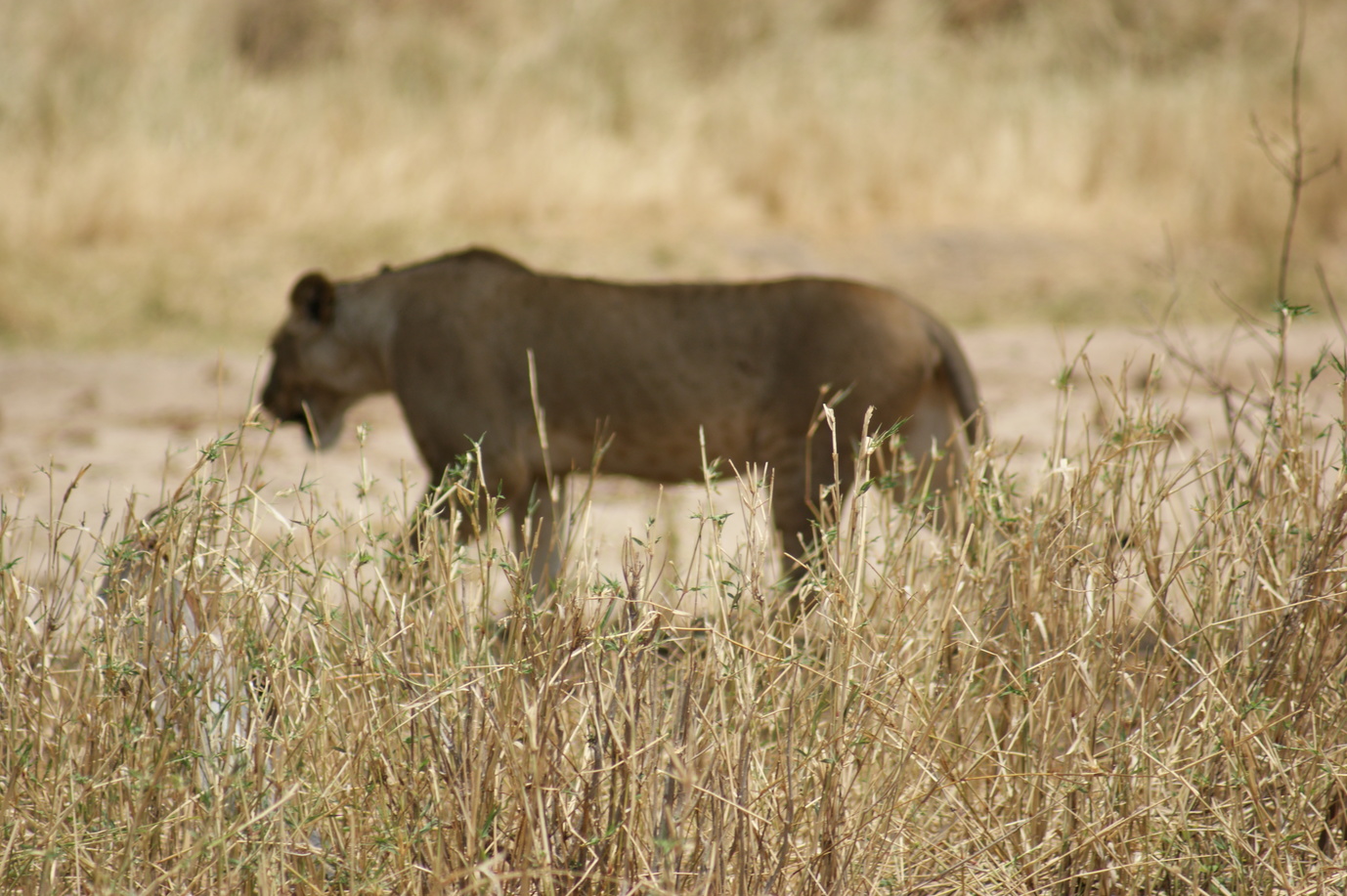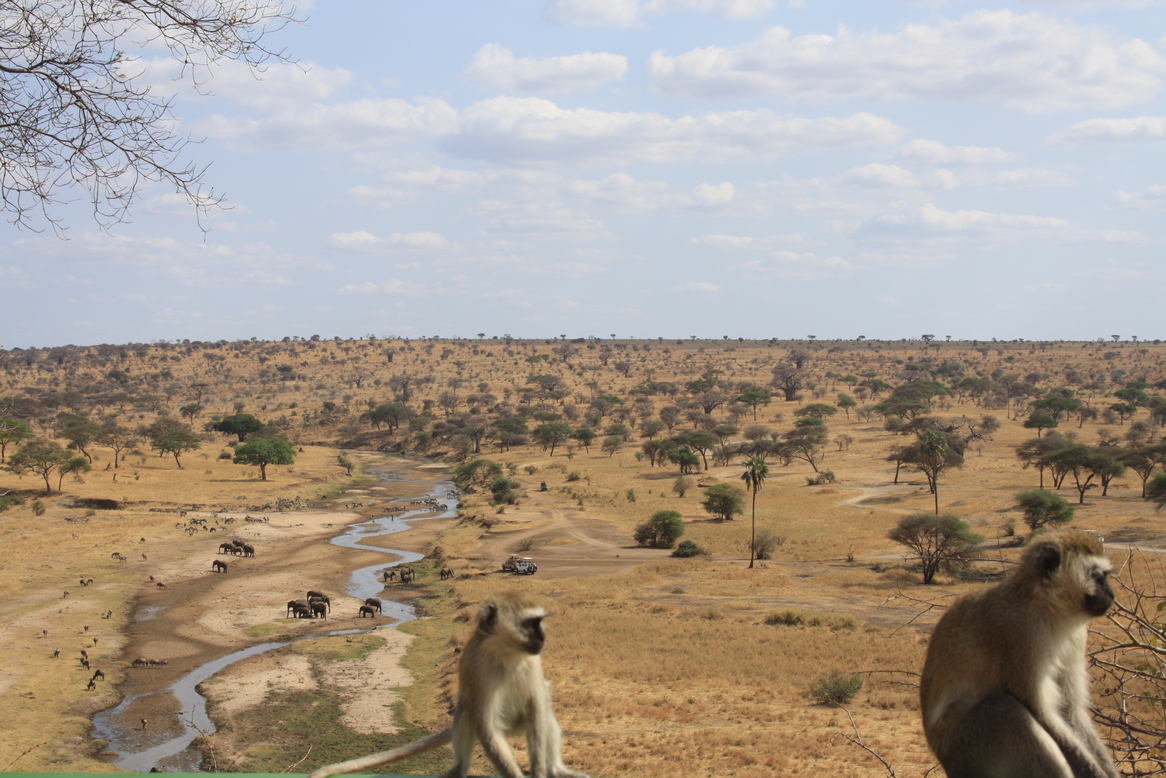 |
| Map of the national parks in northern Tanzania and Kenya. |
 |
| Getting ready to board the vehicle. The cars have awesome pop up roofs that give a great vantage point. |
The park is a classic savanna though containing a fair concentration of trees, especially the iconic baobab trees. There are a variety of habitats from grassland and woods to low hills, scrub and swampland. Cutting through all these habitats is the Tarangire river. The river beds had abundant wildlife with hoards of elephants and giraffe. I was shocked at how habituated the elephants were as our car drove right up next to them, literally able to touch them (though ill advised). We saw a lone lioness relaxing under a tree and other guides told us she just had a failed hunt with another lioness. She awoke to find another bush to lay under as elephants drank water in the background.
We continued to drive through the park with spectacular wildlife. Elephants, giraffes, zebras, ostriches, warthogs, gazelles, and dik diks were abundant. Having been on safaris in a few other national parks in other African countries, I was shocked at how plentiful and habituated the animals were. Animals only seemed bothered when crossing paths with vehicles crossing the road and the skittish and elusive behavior of animals in other parks was absent. We quickly learned that clusters of other cars was a good sign and it meant there was a something good. The highlight of the day came when someone had spotted a cheetah laying under a bush. Although it was far and inactive, it was still a treat to see.
We had lunch at a beautiful vista of the river. Lions and zebras dotted the river taking water, along with various ungulates. Vervet monkeys, baboons, and starlings all terrorized the picnic area. One of the people in our party was victim of a monkey theft as we sat eating. The bold monkey literally came up from behind him and took his biscuits off the table as we sat eating!
We basically drove around until the sunset. Our guide had a radio which was used to communicate with other guides about animal activity. When we passed other cars the drivers would stop and trade information. The park certainly had many visitors but nowhere did the place seem overcrowded and there were many moments without another car in view.
 |
| A baobab tree that has been damaged from elephants looking to extract water from it. |
 |
| Lioness through the grass. |
 |
| Lioness with elephants in the background. |
 |
| A cheetah takes a nap under a tree. |
 |
| Vervet monkey plays in the trees. |
 |
| Lilac-breasted roller. |
 |
| Giraffe takes a bite. |
 |
| Elephant family on the move. |
 |
| A different elephant family, seemingly inspecting the vehicle full of mammals in front of them. |
 |
| Landscape to the east with the Tarangire river. |
 |
| Picnic spot. |
 |
| Crossing rivers on safari always feels legit. |
 |
| Dead elephant carcass, supposedly from natural causes. |
No comments:
Post a Comment